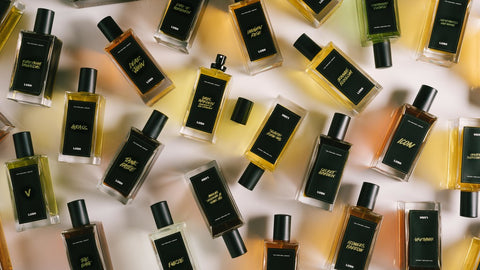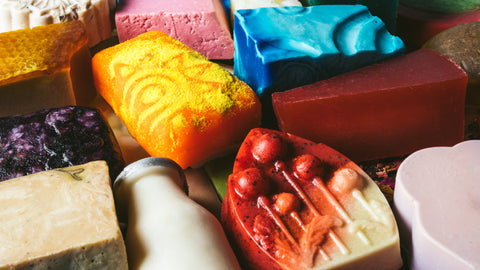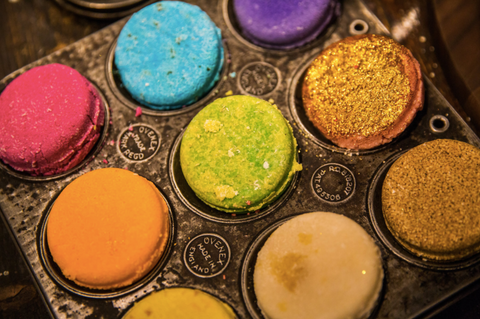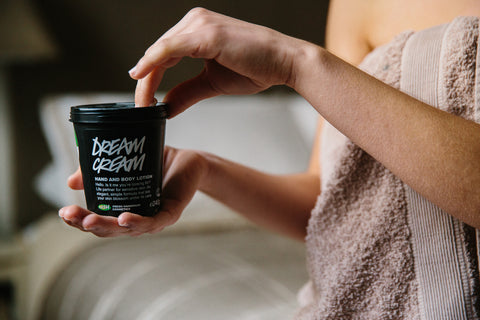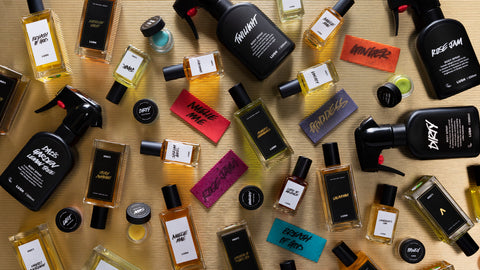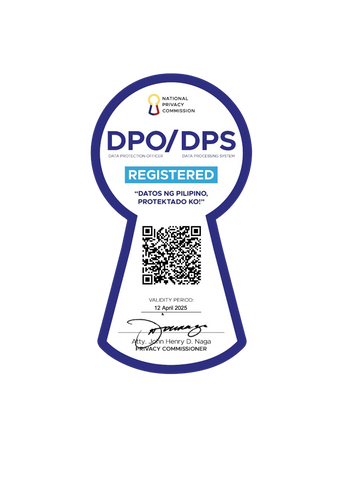Subtotal: 0.00 PHP
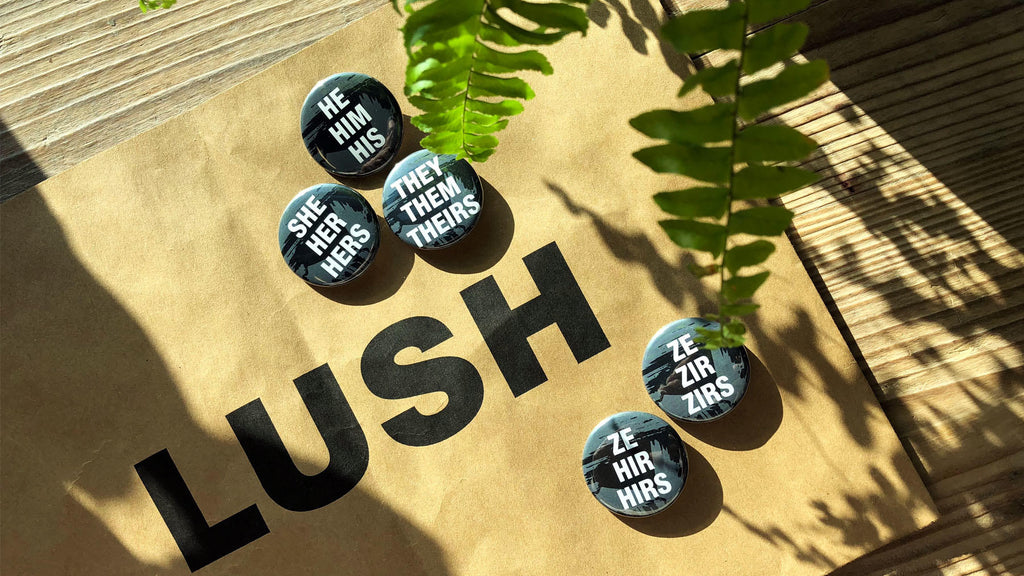
Let’s talk about gender!
First impressions count! Addressing someone for the first time can be the most important element of a new conversation, especially when that person’s preferred pronouns have been considered.
Let’s talk about gender. Gender is always a very personal matter and may not necessarily be what your momma gave ya!
To many people, gender can appear as simple as ‘male’ and ‘female’. To others, gender is more complex and relates more to individual expression and a deeply held personal identity.
Most people are cisgender (see the glossary at the end of this article for full definitions), and identify as the gender they were assigned at birth. But some do not - these people may be transgender, non-binary, gender non conforming or intersex.
At Lush, we recognise that there are more than two genders, and all are welcomed and respected.
It’s all too easy to make assumptions about the gender of another person based on that person’s appearance, but assumptions aren’t always correct. In fact, making assumptions based on a person’s appearance can perpetuate the idea that people have to look a certain way to demonstrate their gender identity. This can be harmful in that it has the potential to limit freedom of expression and also imposes a culture of conditional acceptance.
Nobody likes being addressed by the wrong name or pronouns; it’s awkward at best, and at worst can be hurtful and upsetting. For transgender people, gender dysphoria adds an extra layer of discomfort to this situation.
Gender dysphoria refers to the distress or discomfort a transgender person may feel when the gender they were assigned at birth is inconsistent with their gender identity. These feelings of distress can be brought on by a number of things, including the experience of having their identity invalidated or ignored by those around them, even if this is done unintentionally.
Studies show that when transgender people are not misgendered by those around them, but instead are addressed using language consistent with and respectful of their gender identity, their quality of life and sense of well-being is greatly improved and the impact of gender dysphoria on their lives is reduced - which makes sense! We know that people are at their best when they are made to feel comfortable in their home, workplace, and community. So making the effort to ensure you’re using the correct pronouns for others is an act of respect and an acknowledgment of their right to be themselves, whilst contributing to maintaining a safe, welcoming and happy space for all.
It’s not always easy to ask people what pronouns they prefer when you aren’t sure. Using the safe and inclusive space we created at the Lush Summit 2018, we hoped to start a conversation about personal pronouns to help them become more recognised and understood by all. Some of the most used pronouns are as follows:
-He/Him/His
-She/Her/Hers
-They/Them/Theirs
-Ze/Hir
-Ze/Zir
In this safe space we made pronoun badges available for those who wanted to present their gender and many chose to wear theirs with pride!
But what if you don't have a badge and you’re not completely certain how they’d like to be addressed, it can be tricky to find the best way to ask. One great way to open this subject is to offer your own pronouns first - for example, ‘Hi, my name is XXX, I prefer he/him pronouns. And you?’
If you haven’t experienced gender dysphoria personally, or know anyone who has, it may sometimes be difficult to understand the importance of self-identification, or why pronouns matter - after all, we’re all human. Self-identification isn’t about labels or divisions, though; rather, it’s about autonomy, and increasing understanding and improving communication with the world and those around you.
For a long time, Lush has used its public presence to stand at the forefront of the campaigning world and speak out against injustice and in favor of inclusiveness for all. These badges are a symbol of our commitment to changing the narrative regarding gender and ensuring that all are welcome, always.
GLOSSARY OF TERMS
Cisgender - (often abbreviated to simply cis) is a term for people whose gender identity matches the gender that they were assigned at birth. Cisgender may also be defined as those who have "a gender identity or perform a gender role society considers appropriate for one's gender". It is the opposite of the term transgender.
Transgender - transgender people have a gender identity or gender expression that differs from their assigned gender. Transgender is also an umbrella term: in addition to including people whose gender identity is the opposite of their assigned gender (trans men and trans women), it may include people who are not exclusively masculine or feminine; people who are genderqueer or non-binary, including bigender, pangender, genderfluid, or agender.
Bigender or dual-gender - is a gender identity that includes any two gender identities and behaviours.
Pangender - defined as being more than one gender. A pangender person may consider themselves a member of all genders.
Agender - Agender is a term which can be literally translated as 'without gender'.
Non-binary - Non-binary refers to any gender that is not exclusively male or female. A similar term is genderqueer.
Intersex - is a general term used for a variety of conditions in which a person is born with a reproductive or sexual anatomy that doesn’t seem to fit the typical definitions of female or male. A person might be born appearing to be female on the outside, but having mostly male-typical anatomy on the inside, for example.
Gender nonconformity - is behaviour or gender expression by an individual that does not match masculine and feminine gender ‘norms’. People who exhibit gender variance may be called gender variant, gender non-conforming, gender diverse, gender atypical or genderqueer, and may be transgender or otherwise variant in their gender identity.
Genderqueer - is an umbrella term for gender identities that are not exclusively masculine or feminine—identities which are outside the gender binary and cisnormativity. Genderqueer people may express a combination of masculinity and femininity in their gender expression.
Genderfluid - is a gender identity best described as a dynamic mix of genders. A person who is Gender Fluid may always feel like a mix of the two traditional genders but may feel more masculine some days, and more feminine other days.
Pronouns - can refer to either a participant in the discourse (eg. I, you) or to someone mentioned elsewhere (eg. She, his, they). Pronouns are often related to a person’s gender identity but not always - because people’s genders tend to be private, the sharing of pronouns should not be taken as an invitation to ask for potentially private information about someone’s gender.
He/Him/His - if you refer to a person using a pronoun instead of their name that you can use "He." For example, "He caught the bus."
She/Her/Hers - if you refer to a person using a pronoun instead of their name that you can use "she." For example, "She went to the library."
They/Them/Theirs - “they” pronouns here are singular and refer to an individual, the verbs are conjugated the same as with the plural “they” (e.g. “they are”, “themselves”). If you refer to a person using a pronoun instead of their name that you can use “they”. For example, “They baked a cake.”
Ze/Hir and Ze/Zir - are the most popular forms of gender-free pronouns in the online genderqueer community. If you refer to a person using a pronoun instead of their name, you can use “ze”. For example, “Ze arrived early.”
Instead of ze/hir pronouns, some people go by "ze/zir" pronouns because of the more consistent pronunciation and spelling.
Androgynous - is the combination of masculine and feminine characteristics. Usually used to describe characters or persons which have no specific gender.
Drag Queen - is a person, usually male, who dresses and often acts with exaggerated femininity and in feminine gender roles, most commonly for the purpose of entertainment or fashion.
Drag King - is a person, usually female, who dress in masculine drag and personifies male gender stereotypes, again most usually for the purpose of entertainment or fashion.
To present - how someone presents is most commonly used to describe how someone chooses to physically show their gender using typical gender characteristics.
To identify - how someone identifies is most commonly used to describe how someone has chosen to be recognised as (e.g. he/him/his- “He identifies as male”).
Queer - a reclaimed term used by gay, lesbian, bisexual and transgender people to take away the negativity previously associated with the word. It is used as an umbrella term for anyone who would identify as LGBT+.
Gender assigned at birth - is the determination of an infant's gender at birth, using physical characteristics. This is, however, not a permanent assignment.
Gender dysphoria - is a condition where a person experiences discomfort or distress because there's a mismatch between their biological sex and their gender identity.
Misgender - to refer to using a word, especially a pronoun or form of address, that does not correctly reflect the gender with which they identify.
Deadname - the birth name of someone who has changed their name. It can be equally as harmful or disrespectful to misgender someone and use their deadname when they have specified that they wish to be addressed differently.
